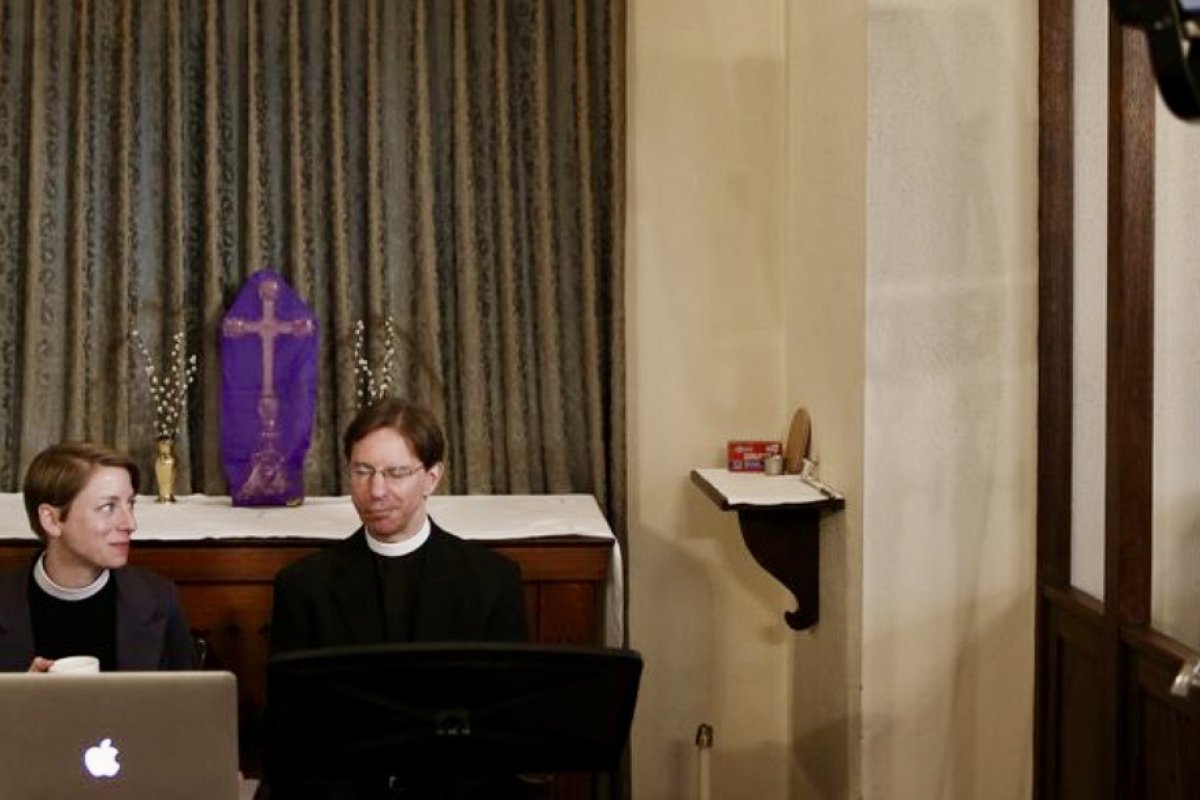
Pandemic Preaching
Exploring homiletical adaptation and invention in the midst of the global pandemic
When I began writing these lines
it was not, to be sure, inspiration but desperation,
to be alive, to believe again in the love of God.
The love of God is not a thing one comprehends
but that by which—and only by which—one is comprehended.
It is like the child’s time of pre-reflective being,
and like that time, we learn from its lack.
–Christian Wiman, Survival is a Style, Poems
Media airwaves have been plentifully populated by preachers, of late. It’s possible that one has to be a preacher, be related to a preacher, or care deeply about preachers to note that fact, and to be curious about this unusual circumstance. With the possible exception of extraordinary leaders of justice movements, such as the Rev. William Barber and his Poor People’s Campaign, it has seemed that the only religious leaders to garner the attention of journalists in recent memory are those whose behaviors have betrayed their cause, the perpetrators of some manner of abuse or fraud. In this particular moment, the scrutiny of that familiar spotlight has likewise been trained on those leaders who persist in gathering their flocks for worship despite state and local quarantines, behavior that comprises yet another form of betrayal by those whose charter is to care for the world God so loves.
But the slower news cycles of pandemic time have allowed for more unassuming voices to emerge as well. For the past few weeks, unlike any time since 9/11, religious leaders have been interviewed on the nightly news and on daytime radio, on both national and local stations. They have appeared on press conferences with governors, and their stories have been published on the websites of Huffington Post and The New Yorker. Perhaps the possibility of religious wisdom came to mind because of the uncanny confluence of a world-wide epidemic with the holy seasons of Passover and Easter, or maybe these leaders were summoned in the newest iteration of an old trope—when we lack information, direction, or courage to face the inevitable or unimaginable, we call the pastor, the rabbi, the imam, the Buddhist teacher, the chaplain.
For over a month now the lead story, day after day, has been humankind’s shared experience of loss—loss of normalcy, loss of livelihood, loss of life, and loss of the illusion that human agency and human ingenuity will protect us from our own human limitations. It is not surprising that newscasters and talk show hosts find themselves at a loss, as well—authoritative answers are not forthcoming, comprehensive understanding is not on offer. Language itself seems to falter, as we reach for tired truisms to articulate depths of vulnerability and uncertainty that our culture rarely has time or taste for. Anyone who has been summoned for a media interview knows the implausibility of excavating the depths of human experience for “a five-minute segment on tonight’s broadcast.” Nevertheless, many faith leaders answered the summons anyway. They were asked what this all means, how to pray or practice “spiritual wellness,” how to deal with grief, what gives them stamina for the arduous work of caring for the suffering of others while suffering themselves. Like tightrope walkers over a deep ravine, they inched their way across the anxious airwaves, word by word, story by story, psalm by psalm.
It was all “good enough for prime time”—that is, these leaders’ solace-giving sound bites were all they could be, for a broad audience, in a few sentences delivered in the heat of a moment. I was grateful for their presence, their willingness to respond, their witness to the resilience of the human spirit and the unyielding nature of hope. But something was missing from these public service announcements, as well—they necessarily lacked the power and particularity of good preaching. What were faith leaders saying on their own time, into their own spaces and on their own occasions, to their own communities? With sanctuaries closed and temples shut at the moment of such great need, how were these leaders forming their words? How does one preach in the midst of a pandemic?
A survey of two dozen congregations whose services or sermons were posted online last week revealed a wide array of approaches to pandemic preaching. Pastors and rabbis presided in empty worship spaces in order to offer continuity and the comfort of place, while others preached in front of altars constructed in dining rooms, rec rooms that double as recording studios, or in their backyards. In both the cavernous public spaces and the intimate home settings, these speakers appeared unusually small, vulnerable, poignantly human. Their messages were rooted deep in text and tradition, rehearsing ancient narratives word for word, while at the same time reaching wide to embrace the hard truths of our context. Enduring truths of the traditions were tested yet again by the shadow of contemporary suffering. There was little of the congratulatory triumphalism that high production values and packed pews can lend a holiday celebration in ordinary time. Instead, the humbling gravity of the historical moment was the occasion for attentive preachers and teachers to find surprising insight in familiar texts—to discover new wisdom in the pauses and hesitations, the uncertainty and anxiety that were always present in these accounts, but easily lost in the glare of sunnier seasons and over-confident preachers.
Christian Wiman, whose poetry wrestles with impossible necessity of giving words to faith, writes in the recently published volume cited at the top of this essay that “there are no heretics, or there are only heretics; humans, mere and mirrored creatures that we are, move toward God in language, and to speak language is to profane him.” Such is the power and the precariousness of preaching through a pandemic.
Last week’s sermons and services were careful, and care-full—shortened video attention spans do not tolerate overabundant verbiage or inconsequential platitudes; a respect for the sanctity of grief moved leaders to say more by speaking directly and saying less. Polished pulpit performances yielded to immediacy, authenticity, and interaction. Many spoke unencumbered by podiums or manuscripts; they stood alone, moved freely, accentuated their points with their hands; some recited poetry or sang unaccompanied, or narrated a personal experience of loss, or love, or hope. They often shared the work with their congregations, illustrating the scripture with the artwork of children, interlacing readings and music-making by members of the community, “zooming” interactive sermons, or inviting hearers to “chat” their prayers along with the presiders as they gathered on Facebook Live.
As I watched these preachers, I realized that I was no longer holding my breath, hoping for the safe passage of the tightrope walker who would bring us some wisdom from across the chasm, helping us to comprehend the incomprehensible love of God. Instead, in these pandemic sermons, preacher, tradition, people, and a moment in history stood together, allowing themselves to be comprehended by that Love. They gathered, listened, and responded across time and space, in concert with a history and tradition known for “making a way where there is no way.” It is too early to say, of course, how preachers and their people will be changed by their own version of wilderness worship—that prognostication is beside the point. But people of faith will be telling this story for generations—and in such telling, of course, the world is made new yet again.
Sightings is edited by Joel Brown, a PhD Candidate in Religions in the Americas at the Divinity School. Sign up here to receive Sightings via email. You can also follow us on Facebook and Twitter. The views and opinions expressed in this article are those of the author and do not necessarily reflect the position of the Marty Center or its editor.
Image: Clergy at a church in Boston prepare for a virtual worship service. (Photo: Jessica Rinaldi | Boston Globe)


